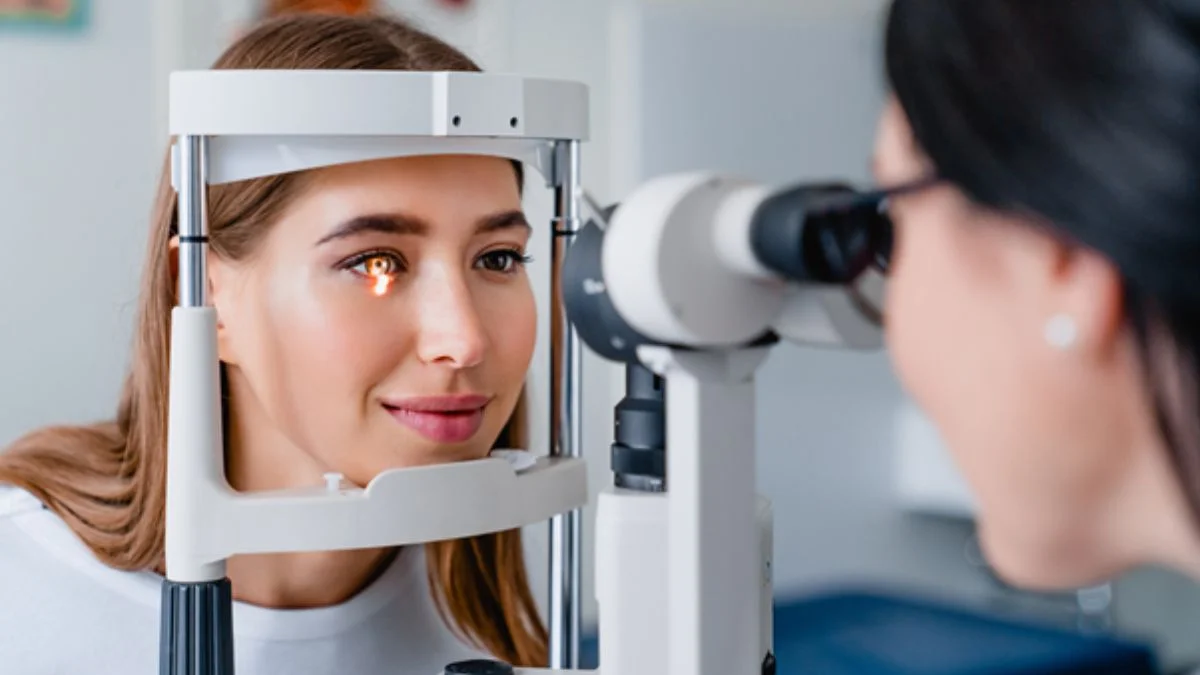A comprehensive eye exam is essential to maintain your overall eye health. Whether you’re experiencing vision changes or simply need a routine check-up, knowing what to expect helps make the process smoother.
Eye care professionals in Toronto recommend having regular eye exams to detect potential issues before they affect your daily life. But what exactly happens during these exams?
Read on to explore the key aspects of a thorough eye examination to give you a better understanding of what’s involved.
Initial Consultation and Vision History
Your eye exam in Toronto will begin with a discussion about your vision health, giving the optometrist essential background to guide the rest of the exam.
The following are key aspects typically covered during the initial consultation:
- Health and lifestyle questions: You’ll be asked about your general health, medications, and lifestyle. Information about your diet, screen time, and smoking habits is often considered, as these factors can affect your eye health.
- Current vision issues: If you’ve noticed changes in your vision or symptoms like dryness, discomfort, or headaches, this is the time to mention them. Whether you’re in downtown Toronto or elsewhere, being upfront helps the doctor address your specific eye care needs.
This consultation ensures your eye doctor has a full picture of your vision health, allowing them to tailor the exam to you. During this process, many professionals in eye exam Toronto locations recommend discussing your use of contact lenses or glasses if you already have a prescription.
Visual Acuity and Eye Chart Test
After the initial consultation, your eye exam for adults will include a vision test to assess your clarity of sight. The most common method involves using an eye chart to check your ability to see letters or symbols from a set distance.
The following are key components of this part of the exam:
- Visual acuity test: The doctor measures how well you can see close-up and far away. This determines if you need prescription glasses or updates to your current lenses.
- Refraction test: This part of the exam helps to identify whether you’re nearsighted, farsighted, or have astigmatism. The doctor will place a series of lenses in front of your eyes and ask you to identify which ones improve your vision the most.
Together, these tests provide a clear picture of your vision needs. Many eye exam Toronto clinics include these tests to ensure your prescription matches your vision requirements, helping you see more comfortably and clearly.

Eye Muscle and Pupil Function Tests
Next, your eye doctor will evaluate how well your eye muscles work together. Proper muscle coordination ensures smooth eye movements and clear vision.
The following are key tests your optometrist may perform:
- Eye movement test: This test checks how your eyes move in different directions. Strong eye muscles are essential for activities like reading or driving.
- Pupil light reflex test: The doctor shines a light into your eyes to observe how your pupils respond. Abnormal reactions could indicate a neurological issue or eye disease.
These tests help ensure your eye muscles and pupils are functioning well. If any irregularities are detected, your doctor may recommend further tests or treatments to maintain optimal eye health.
Retinal Examination and Digital Imaging
The health of your retina is crucial for detecting signs of more serious eye conditions. During your eye exam, your doctor will use advanced tools and technology in eye care to thoroughly examine this part of your eye.
Below are the key methods used in this process:
- Retinal examination: To get a clear view of the retina, the doctor may use a special lens and light source. They’ll look for early signs of conditions like macular degeneration or retinal detachment.
- Digital imaging: In some cases, your optometrist will use digital tools to capture detailed images of your retina. This helps in diagnosing conditions like glaucoma or cataracts early on, often before symptoms even appear.
These tests give your eye doctor a clear view of your retinal health. This allows for early detection of issues that could affect your vision in the long run.
Eye Pressure and Glaucoma Screening
A key part of every comprehensive eye exam is checking for glaucoma. This condition often develops without noticeable symptoms, making early detection essential.
The following are the standard tests used to assess your risk for glaucoma.
- Tonometry test: This test measures the pressure inside your eye. Elevated pressure is often an early sign of glaucoma. The test is quick and painless, involving a small puff of air directed at your eye or a gentle probe.
- Peripheral vision test: Glaucoma often affects your peripheral vision first. A vision test that evaluates your side vision helps identify any early loss.
Regularly monitoring your eye pressure and peripheral vision helps detect glaucoma early. Catching it in time can prevent irreversible damage, making this part of the exam essential for protecting your long-term eye health.
Final Thoughts
Regular eye exams are crucial for maintaining your vision and eye health. They help detect issues early, often before you notice symptoms. Understanding your unique vision needs allows your optometrist to tailor solutions specifically for you. Prioritizing these exams ensures you enjoy clear vision and catch potential problems before they worsen.
For more information, click here.









